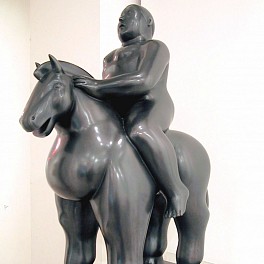BIOGRAPHY

B. 1932 -
Fernando Botero is a neo-figurative Colombian artist, best known for his distinctive style of robust, inflated and amplified human forms, still-life’s, animals and landscapes.
Botero was born in Medellin, Colombia, whose Catholic churches still maintained Baroque style. In his youth, Botero attended a matador school, an influence which would later be mirrored in his art. During his teenage years, he studied art in Paris, and then moved on to Florence - where he was influenced by the techniques of the Italian masters. He was especially fond to Giotto's unprecedented use of space, perspective, and volume. Botero's plump figures are often seen in European Renaissance art.
In 1948, he exhibited for the first time in Medellin together with other artists from his home province. In 1951, Botero moved to Bogota, and after only five months there he had his first one-man show. In 1956, he married and moved to Mexico, where he found his own style influenced by Diego Rivera's mural painting. In 1960, he moved to New York and was awarded the Guggenheim National Prize for Columbia. In the following years Botero moved to Paris, then Tuscany, continually evolving his style and technique.
In early 2004, Botero donated a series of 23 oil paintings and 27 drawings depicting different elements of the country's long-lasting violence to the National Museum of Colombia. To this day, Botero's works are shown in numerous international museums and exhibitions. He lives and works in Paris and New York.
